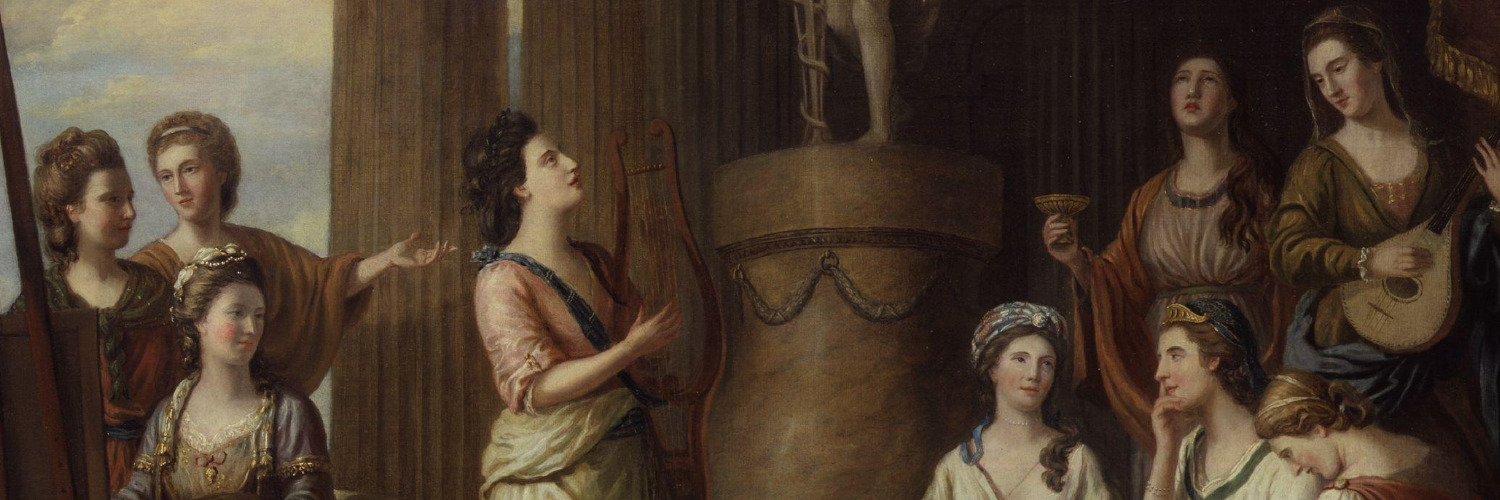- Physical form: One sheet folded into 2 leaves (20 x 24.8 cm)
- Cover: Miss Rickards / At Mrs Hunts' / [in a different hand] Crescent [tear] / near / Birmingham
- PM: [inner circle] 6 [outer circle] 98
- WM: H & T SALMON / [17]94
- SM: Misc MS 4337
June 6th
I thank you for your pretty French letter, which I would send back corrected if I had any frank;
as it is, I will keep it till we meet—Your observations on the history you have read are very just, & shew that you not only treasure up facts in your memory, but that your mind receives the impressions those facts are calculated to make— Nothing exercises the moral feelings more profitably than History. Whe[n] we study those parts of science which relate to inanimate nature, our sagacity is called forth & our taste is gratified, but that lively interest is wanting which results from contemplating the actions & fortunes of our fellow creatures. On the other hand when we enter with vivacity into the transactions which pass before our eyes, our feelings are apt to be mingled with the bitterness of party or tinged with private partialities & resentments. In History alone nothing checks the freedom of discussion [written over “dissension”?] you may take the side of the Greeks or of the Persians,
without
[fol 1v] without giving offence to any body, & if you can pick up any anecdotes relative to the coterie of Aspasia or the toilette of Semiramis they may be circulated without occasioning any scandal—
I hope you are all enjoying the country as much as we do, but begging your pardon I doubt whether you have so fine a one to enjoy, & this I may say without any disparage^ment^ of yours for the face of the country about Box Hill is I believe allowed to be one of the finest in England. Add to this that its beautiful swells & hollows are improved to the best advantage in the numerous gentlemen’s seats which every where embellish the prospect. Amongst these Mr Locke’s
has the preeminence for the admirable disposition of the walks & points of view, & the artful manner in which the different shades of green relieve one another so as to produce the most picturesque effect. Indeed modern English Gardening is the art of Landscape painting only the artist uses real trees & turf & water instead of canvass & a box of colours but he considers every effect of light & shade the disposition of every tree & almost of every bough. His keeping,
his foregrounds & his back-grounds are all disposed by the same rules of art which the Painter observes. Mr Locke had a consultation of Painters to determine in what spot of the grounds his house should would be built to most advantage—I wish you would give me
[fol 2r] [your] opinion in your next letter what constitutes that beauty, in a landscape with which we are all so much charmed; how much of it is owing to colour, to form, to contrast, to motion &c—This is a very good country for botanizing. We have had several specimens of the various species of the Orchis, many of which (formed it should seem in the sportiveness of nature) bear a whimsical resemblance to some animal or part of animal. There is the bee Orchis & the [tear] Orchis, each of which [m]ight deceive the eye with [rese]mblance of those insects whose name they [bear] & there is another, the root of which is exactly like a child’s, or if you will, a fairy’s hand. I hardly know what to tell you about my Brother; a while ago we thought him mending, he is just now not so well, vicica Vicissitudes more anxious than uniform illness! He seems to take comfort in our company. I will wait therefore till I have another letter fr[heavy crossout]before I fix our return, as it is possible you may have plans which may delay you[.] Remember me affectionately to Mrs Rickards & Miss H.
tell Mrs Rickards she has had an escape of increasing her family by the servant she dismissed . She has acknowledged to Mrs Carr
that she is five months gone with child. Excuse me [for not] having written sooner, &

